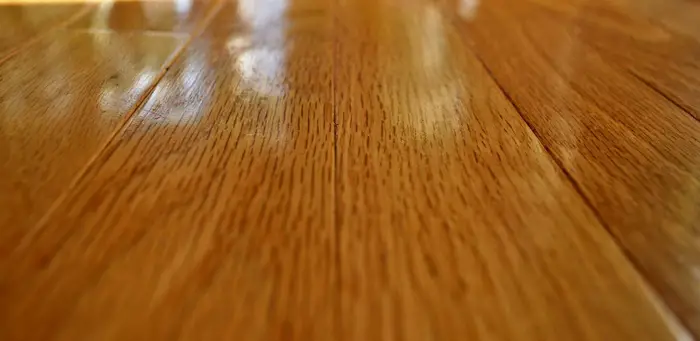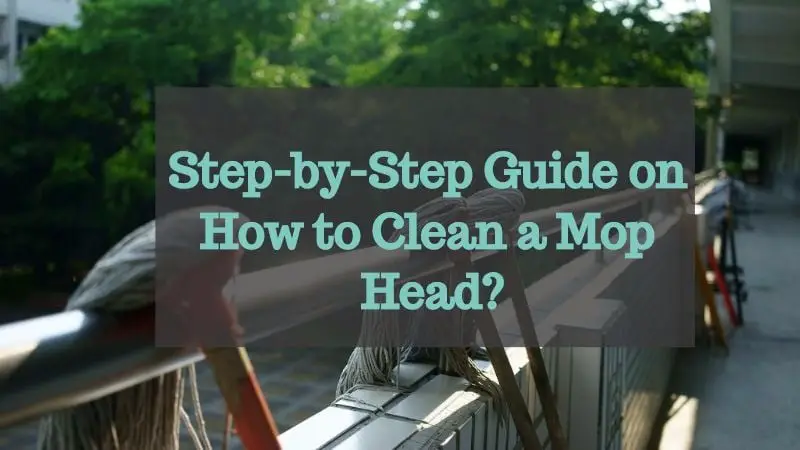How To Clean Outside of Pots and Pans?
Ah! The scorched pots and pans put up an unsightly image in the kitchen, making you feel embarrassed in front of guests. But, you are not alone. Trust me, this happens to the best of cooks. No matter how careful you are while cooking, the outside of pots and pans are constantly exposed to heat, hence they start showing their age and signs of decay with time.
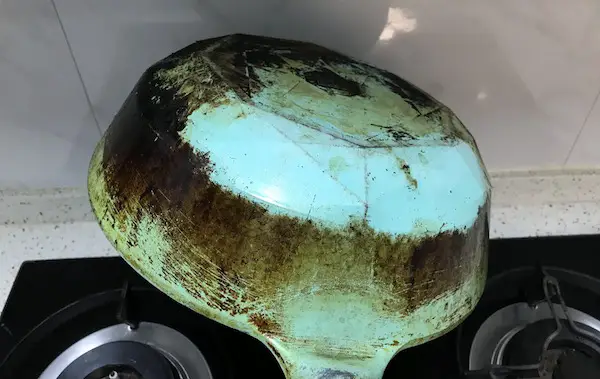
Don’t lose heart because that doesn’t mean you have to give up on your favorite pots and pans so soon. Regardless of the material with which the utensils are made, you can now restore the shine and make your kitchen look gorgeous again. Read on to find step by step instructions on how to clean the outside of pots and pans made from different metals.
#1. Stainless Steel
This is a robust material that can easily handle the rough side of a scrubbing pad and needs less maintenance. No wonder people love using stainless steel utensils. However, they do get blackened with use and as they age, you can see hard water marks, food burn stains, and so on.
To spot clean the burnt or darkened areas, prepare a paste by mixing 2 tablespoons of baking soda with 1 teaspoon of hot water. Apply this paste on the areas to be treated and use some force to scrub vehemently with a non-abrasive pad. Rinse and let dry.
If there are tougher stains, make a mix of two quarts of hot water and ¼ cup of baking soda. When the stains are very stubborn, you will need a more potent cleansing agent. Prepare a paste by mixing one part of hydrogen peroxide and one part of baking soda. Rub it on the stains and let it sit for about 20 minutes and then rinse.
Warning: Baking soda has an abrasive nature, hence it is suitable for stainless steel pots and pans. However, the same should not be used on appliances.
#2. Aluminum
Aluminum material gets scratched easily and scrubbing with detergents can leave ugly marks on the outer surface. As a result, you must soak your aluminum pots and pans in hot water and carefully remove the burnt food with your hands.
To restore the shine, prepare a homemade aluminum polish by mixing equal parts of cream of tartar (see on Amazon) and water. Gently polish the outside with this paste and then rinse off with warm water. An alternative method is to cut a lemon into half, cover the half with salt and gently rub the outside of your cookware. Rinse off as usual.
To get rid of the hard-to-remove stains on your aluminum pots and pans, make a paste by mixing 1 quart of water, two tbsp cream of tartar, and 1/4 cup of white vinegar. Bring this mixture to boil completely and then submerge the utensils into it. Soak for at least one hour and then scrub off with a soft pad or brush. Rinse with water.
Warning: You must avoid using ammonia for cleaning pots and pans as they can make spots worse, strong alkali can cause discoloration, and chlorine bleach can corrode the aluminum material.
#3. Glass Cookware
Glass pots and pans are beautiful to look at but they are extremely fragile and must be handled with care. We often use microwaveable glass bowls in the oven and they end up getting stained. For lighter stains, you can remove them by soaking the glass cookware in lukewarm water and then scrubbing them gently with liquid dishwasher soap.
For the tough stains, you must set the dish inside the sink and fill it with enough water to completely submerge it. Add ¼ cup of baking soda to the water and let the utensils soak completely. Then use a non-abrasive scouring pad to gently clean the outside. Rinse with clean water.
#4. Copper Utensils
Copper utensils look beautiful when new but with age and use, they get blackened outside and lose their shine. To clean the pots and pans, put them upside-down in the sink and sprinkle salt over the bottom side of the pan. Drizzle some lemon juice or vinegar over the salt and let it sit for at least 15 seconds. Now, take the rough side of a double-sided scrubbing pad and give it a good scrub. Add some extra vinegar/ lemon juice if needed and keep scrubbing until all stains are removed. Rinse thoroughly and dry.
#5. Cast Iron
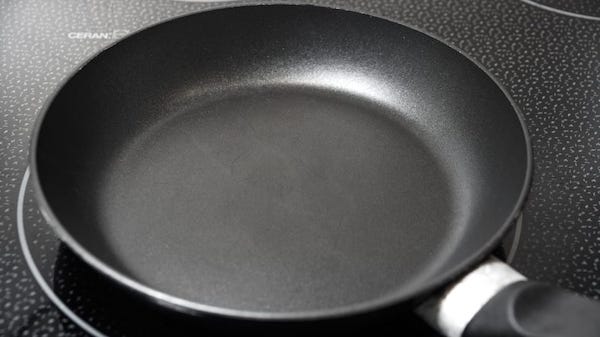
Utensils made from cast iron need special treatment. They are more about maintaining than cleaning with soap and water. Burn-stains and hard watermarks are not the main issues for the cast iron cookware. Their biggest enemy is rust and if for any reason you find them covered in rust, don’t panic as they can still be saved.
Most of the cast iron skillets come pre-seasoned but if you bought an un-seasoned item, here are the instructions to season them well. Wash them with warm soapy water and dry completely. Rub some cooking oil on the cookware and bake in an oven at 350 F for one hour. The seasoning on cast iron skillets prevents food from sticking on to the surface, however, it may sometimes get burned or caked.
To spot clean stains on cast iron skillets, make a paste of cooking oil and coarse salt, and rub this mixture over the stains with a towel or dishcloth. Rinse and dry.
For tougher stains, mix two tablespoons of salt with one teaspoon of hot water and rub this using a potato cut into half. You may also use a bristle brush for scrubbing gently. Rinse off and dry cookware completely.
#6. Enamel Covered Utensils
Enamel cookware is preferred for being made of cast-iron, but the fact that they are covered in porcelain layer to prevent the leaching of iron into food. These pots and pans are well-insulated and easy to clean but food burns can leave unsightly stains on them.
To spot clean the stains, treat it with a paste made of ¼ cup baking soda and 2 tbsp warm water. Rub the paste over the stains and gently scrub with a soft bristle brush. For stubborn stains, fill the sink with hot water and turn the enameled pots and pans upside down, add ¼ cup of baking soda and let it soak for one hour, then rinse as normal.
#7. Non-Stick (Anodized Aluminum)
Cleaning the non-stick pots and pans call for some extra care as any harsh cleaning substance can cause scratches on the non-stick surface. However, when it comes to cleaning the outside, it requires some elbow grease.
For basic cleaning, use a dishwashing liquid with a dishcloth to clean the outer surface. If there are tough stains, fill the sink with very hot water and add detergent to it. Submerge the utensils into the water and use a non-abrasive pad or soft-bristled brush to get rid of the stains.
Easy Ways To Clean Pots And Pans
The outside of pots and pans often get neglected while cleaning and they eventually buildup hard water deposits and burnt-on stains. When normal hand washing and use of detergent or liquid dish wash soap is not enough, you need something more powerful to cut the stains. Here are some of the cleaning agents and tools you can use to clean the outside of pots and pans.
# Aluminum Foil
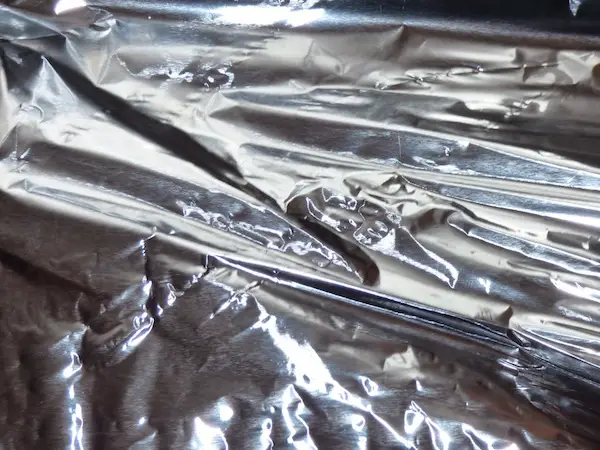
If you don’t have a scrub pad to remove the stubborn stains, you may use an aluminum foil instead. Crumple the foil in your palm to make a flattened ball that you can use to scrub away the stains from outside the pots and pans.
# Club Soda
If you have cast iron cookware at home, you know that cleaning them is no fun at all. You can ease the cleaning process by filling the sink with water and adding club soda (see Amazon) in it. Now submerge and soak the utensils in this solution for some time and then rub off with a scrubbing pad. Buy it from Amazon.
Alka-Seltzer
If your ovenproof glass utensils have got stubborn stains, fill the sink with water, add up to 6 Alka-Seltzer tablets and let them dissolve completely. Submerge the cookware in the water and let them soak for at least one hour. You can gently scrub the stains away. Buy it from Amazon.
Cream of Tartar
This is another effective cleaning agent that can make discolored aluminum pots, pans, and other items shine like new. Just dissolve two tablespoons of cream of tartar in one-liter water and bring the solution to boil. Simmer for 10 minutes and use this mixture to treat the outsides of aluminum cookware.
Denture Tablets
Every kitchen should have these handy cleaning agents and use them is simple too. Just fill the sink with water and add a tablet or two, depending on the size. Wait until the fizzing stops completely and then submerge the cookware into the solution. Scrub gently and they will be clean. Get it from Amazon.
Fabric Softener
They are meant for washing clothes but can also be used for cleaning the outsides of cookware. Add a little bit of fabric softener in one liter of water and submerge casseroles and other utensils that need cleaning. Soak for an hour and then scrub with a gentle brush or sponge pad.
Freezer
If your pot and pans have brunt food solids or liquid not only inside but also on the outside, you can save the trouble of cleaning the mess but putting the cookware inside the freezer for a few hours. When the food residue becomes frozen, it becomes easier to remove them.
Ketchup
This common household condiment can be put into good use by cleaning the outside of copper pots, pans, and decorative molds. It is cheaper than commercial tarnish removers and safe to apply too. Just coat the surface to be cleaned with ketchup and leave for about 30 minutes. The acids in ketchup react with the stains to remove them effectively. Rinse and dry immediately.
Lemons

When life gives you lemons, use them to sparkle dull pots and pans. Just cut a lemon into half and use it as is or sprinkle with some salt to rub the utensils inside out. Rinse with water or buff with a damp cloth.
Oven Cleaner
We know those cake and pie droppings that can cause ugly stains on the inside and outside of your baking cookware. To clean them, wear a rubber glove and cover the outsides with an effective oven-cleaner (see Amazon). Put the cookware inside a heavy-duty trash bag, close the mouth tightly and leave overnight. Next morning, open the bag outdoors and keep it away from your face to avoid inhaling the hazardous fumes. Wear rubber gloves and rinse with water.
Pantyhose
You can make your own homemade scrub pad to clean the stains on nonstick cookware. Just scrunch up a pair of old but clean pantyhose, cut off the ends and make a knot. Moisten the pantyhose with warm water and add a few drops of liquid dishwashing detergent. Now use this DIY scrub pad to clean the outer and inner walls with ease.
Different Uses Of Salt For Cleaning Pots And Pans
- If you have run out of elbow grease and need to scrub off burnt stains on enamel pans, soak the cookware in saltwater overnight. Rinse off the next morning.
- Burned milk not only stain the inner walls but also the outsides of utensils. Salt makes it easier to get rid of them. Moisten the stained areas and cover them with coarse salt. Wait for about 10 minutes and then scrub off with a scrubber pad. Salt not only removes stains but also eliminates bad odor.
- Grease stains outside the cast iron utensils are difficult to remove because they are not water-soluble. Sprinkle some salt over the stains and leave for some time for the grease to absorb the salt and then wipe it off. Clean as usual with liquid dish wash soap.
- If you are worried about your cast-iron cookware getting rust, avoid washing them in water. Instead, take good amount of salt in a scrubbing pad and rub gently over the utensils while it is still hot. Wipe clean and again apply a coat of vegetable oil or sesame oil before keeping it on.
- Warning: While the above method works in case of a cast iron cookware avoid doing the same with a nonstick pan as this will cause scratches.
Different Uses Of Vinegar To Clean Pots And Pans
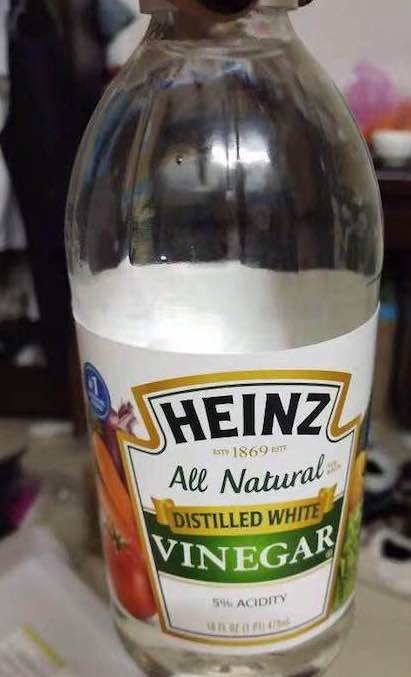
Vinegar is one of the most effective natural cleaning agents you must have in your kitchen or bathroom cabinet. Whether you want to clean tiles, countertop, hair water stains, or burnt marks from pots and pans, vinegar can be used in different ways.
- The dark and ugly stains on your aluminum utensils can be removed by mixing vinegar and water. This solution can be boiled to increase the intensity and then applied on the outside of pots and pans. Rub with a scrubbing pad and rinse with cold water.
- To get rid of stains from stainless steel cookware, soak them in white vinegar for about 30 minutes, and then rinse with hot soapy water. Follow by rinsing with cold water.
- If there are cooked food droppings on the outside of your glass ovenware, submerge it in a solution made of four parts of hot water and one part vinegar. Let it soak for 30 minutes and then scrub gently to remove the stains.
- Non-stick cookware can also get mineral stains on the outside but you can use undiluted distilled vinegar to get rid of them. Just dip a piece of cloth in vinegar and rub the outside of your utensils to make them shine. To loosen tough stains, submerge the cookware in a solution made of 4 cups of hot water, 1 cup white vinegar and 2 tablespoons of baking soda.
- Baked and blackened grease stains outside your broiler pan? Use a cleaning solution made of one cup of apple cider vinegar and two tablespoons of sugar. Apply this paste on the stained areas while the cookware is still hot and let it sit for about an hour. Scrub gently and you will see how the grime slides off with ease leaving behind a beautiful luster.
Related Questions
Why do aluminum utensils turn black?
Aluminum pots and pans can be seen in every kitchen because it is a cheap and light metal that allows heat to transfer evenly. However, oxidation causes the outside area to become dark after some time. Cooking acidic foods also results in dark gray streaks in the utensils.
How to clean soot from cookware used outdoors?
If you enjoy preparing food in campfires or open flames, the utensils may get covered in deep black soot. Make sure you don’t use a knife or any other sharp objects to remove them. Use natural cleaning agents like baking powder and white vinegar to get rid of soot easily.
How to avoid cookware bottoms from turning dark while cooking?
Try to keep the flame at a low setting for the major part of your cooking. This might take longer for the food to cook but the bottom of your pots and pans will not be blackened so easily. Alternatively, you may use cast iron utensils because they are already dark, hence marks don’t show easily.
